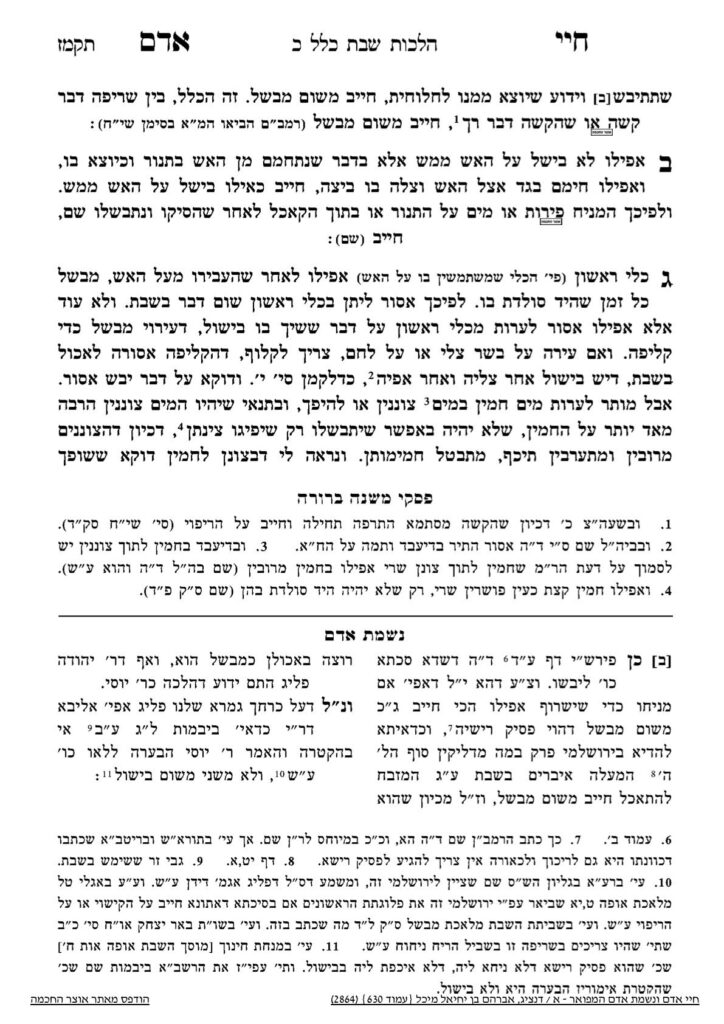We are continuing in siman 3, where we learned that if one performs irui kli rishon on a food, they need to remove a kdei klipah in order to eat the food. We left off with the question of why it is necessary, even in a bedieved situation, to remove the kdei klipah, and why we do not rely in this bedieved situation on the rishonim who hold irui is muttar. Before we do so, we need to discuss whether it is even muttar to remove the kdei klipah layer on Shabbos, or whether it is an issue of tikkun and/or borrer.
We find the issur of tikun regarding food. For example, Chazal prohibited taking terumos and maasros from food on Shabbos due to the tikun taking place in the food. Hafrashas Challah is similarly assur due to tikun. Rav Akiva Eiger, in siman 318, refers us to a Pri Megadim who raises this question regarding removing the kdei klipah. The Pri Megadim holds it is assur to remove the layer.
However, multiple poskim hold it is not a problem, because when it comes to terumah or challah, the entire food is assur until hafrasha or terumah is taken, so the removal of issur inherently changes the status of the food. In our case of issur kdei klipah, the food is inherently muttar, just there is some issur surrounding it, so removing the klipah does not inherently change the status of the food.
Regarding borrer, we have learned that the issur of borrer does apply to peeling something (s441-442). However, many poskim are not concerned for borrer here. We have learned that borrer is defined as the taroves of two minim. Even if it is only one min, there will only be an issue of borrer when there are two different clear and distinct functions within the min, such as the flesh of the banana and the peel. Over here, the item is question is one min, in that even though part of the item has issur, there is no functional difference between the part of the item which is issur and the part of the item which is heter. The rishonim explain that the halachos of borrer and defining different minim are not dependent on issur v’heter, assuming the physical characteristics are the same. Therefore, the Chayei Adam concludes that one can remove the kdei klipah of issur from the item on Shabbos itself and then use it.
Summary
- In most situations, kli sheini does not cook, but irui kli rishon cooks kdei klipah, which is defined as the thinnest layer which can be removed from the item in one piece.
- The part of the food which is cooked will now be assur to benefit from on Shabbos. This is known as maaseh Shabbos.
- Even though we hold ain bishul achar bishul, there is a machlokes whether ain bishul achar tzli and ain bishul achar afiyah, and one must be machmir not to perform irui kli rishon on these items. One will need to remove a kdei klipah even bedieved.
- One can remove the kdei klipah on Shabbos itself, and there is no issue of tikun or borrer in doing so.



